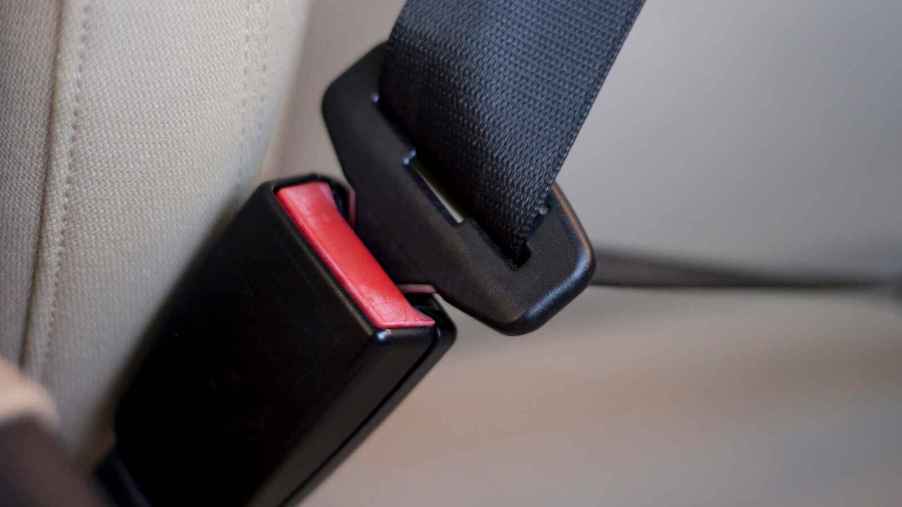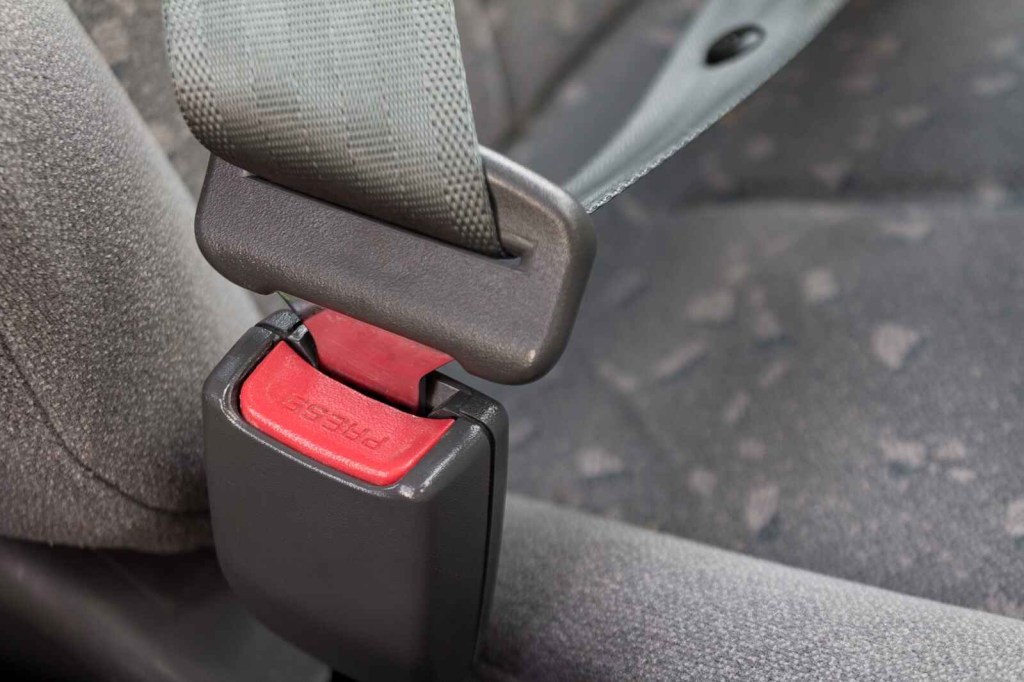
Wearing seat belts is practically mandatory for most passengers in vehicles in the United States. However, some drivers with aversions to using a seat belt have found workarounds over the years to skirt these laws. One of the most recent is a device dubbed a seat belt silencer.
What is a seat belt silencer?

A seat belt silencer is a device that clips into the seat belt buckle. Unlike the traditional buckle “tongue,” a seat belt silencer is not attached to the shoulder strap or lap belt. Thus, the seat belt reminder system and alarm are quite literally “silenced” as the car’s onboard computers perceive the use of a silencer as the actual seat belt being worn and clipped into place.
The proposed function of a seat belt silencer is not nefarious, however. The devices are meant to be used in situations when a driver needs to transport a heavy or bulky item on a passenger seat. A car may perceive this weight as a person, triggering the seat belt reminder system. A silencer can then be used to turn off this warning system. As such, drivers aren’t subjected to an alarm while transporting an item that doesn’t need to be buckled. Technically, folks could just buckle the seat belt before loading up the seat.
However, some drivers and passengers are using seat belt silencers as a workaround to turn off seat belt reminders. Instead of clicking on an actual seat belt, these drivers can mute the auditory onslaught of a seat belt warning system, allowing drivers to travel around without wearing a seat belt.
As such, the sale of seat belt silencers is not illegal, but their use still must conform with applicable seat belt laws.
Seat belt laws in the U.S.
Seat belt usage laws vary from state to state, but 49 states and the District of Columbia require front-seat adult passengers to wear a seat belt. The sole exception is New Hampshire, according to the Insurance Institute for Highway Safety (IIHS). Most states also have seat belt laws that require some or all rear passengers to wear a seat belt. Child seat belt laws also vary from state to state. They mandate at what age a child should use specific types of child seats, booster seats, or other child restraints.
Most states also have laws in place for “primary enforcement” of seat belts for front passengers. That is, a car can be pulled over, and the driver may be cited solely for a passenger not using a seat belt. Other states use “secondary enforcement,” in which a driver can only be cited for not using a seat belt (or a passenger not wearing one) in the instance of another observed violation, like speeding.
Of course, law enforcement has only so much presence to constantly enforce seat belt laws. Drivers can still travel without wearing one. However, they are often discouraged from doing so by their car, truck, or SUV illuminating a seat belt reminder light. Often, cars emit a beep or seat belt alarm noise to remind drivers to buckle up when they haven’t done so. Those reminders have led to the frequent use of seat belt silencers by those who are opposed to buckling up.
Why are certain drivers against seat belts?
A study published by the Transportation Research Board noted the most common reasons for drivers not wearing seat belts were that they were only driving a short distance, they forgot to buckle up, they were in a rush or seat belts cause discomfort.
The study also noted a smaller subset of non-users expressed it was a personal freedom choice. Others shared concern over seat belts possibly entrapping them in a crash. Sometimes seat belts can even cause injuries in car accidents.
There is some merit to the latter argument – seat belts can lead to injuries during a crash. However, this point is negated by the fact that not using a seat belt in a crash can result in significantly worse injuries or can be fatal.
The NHTSA notes that about half of all passenger vehicle occupants killed in crashes were not buckled up. The organization said seat belts saved nearly 15,000 lives in 2017. An additional 2,549 could have survived if they had been wearing one.
Overall, data overwhelmingly supports seat belt use for all passengers in the interest of safety.



